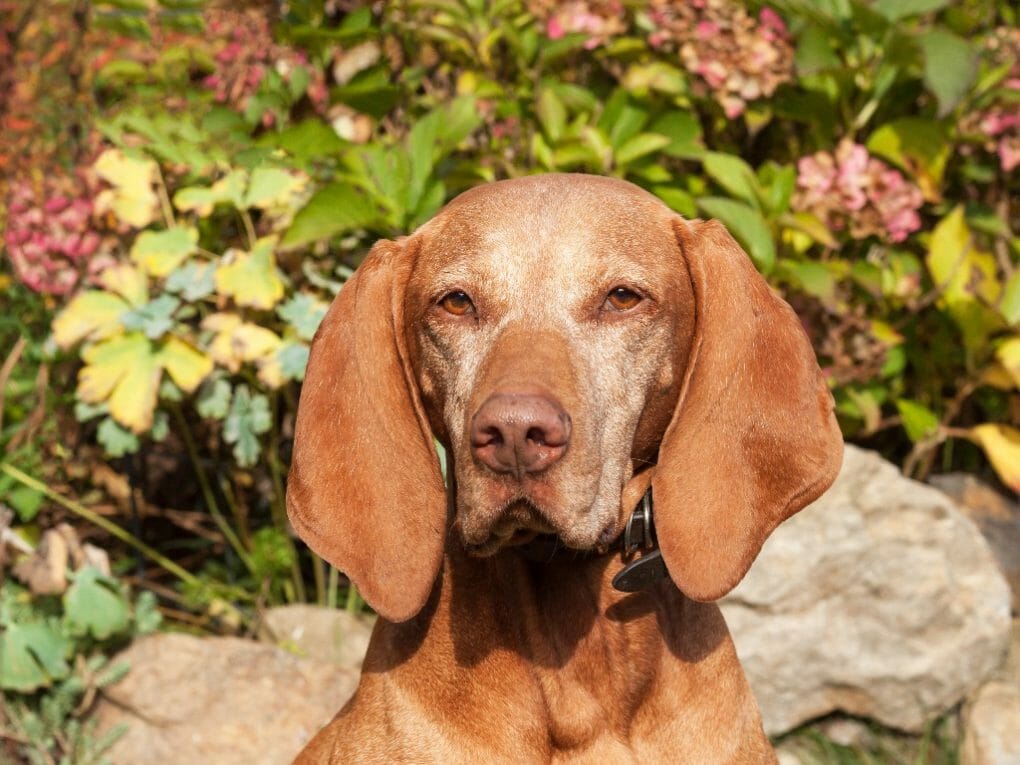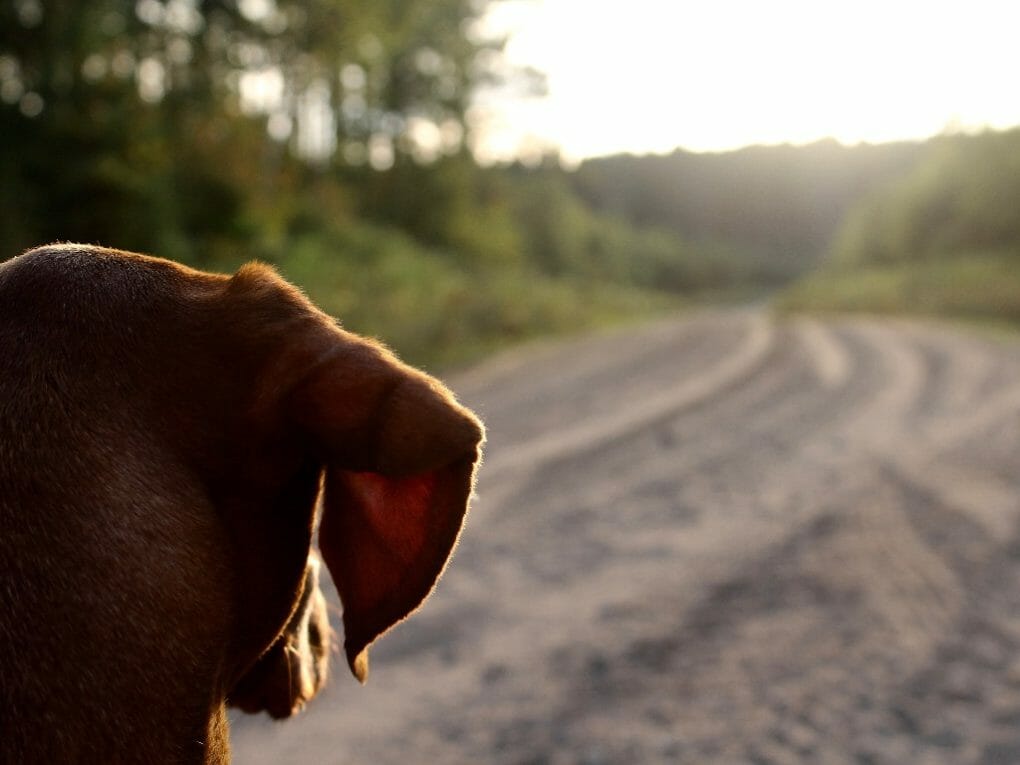When Do Vizslas Stop Growing: Everything You Need to Know About the Growth of This Dog Breed


Vizslas become fully matured at around one to two years; they reach their maximum size at around six to eight months. After that, growth is slow and gradually tapers off.
Females usually stop growing at a slightly smaller size than males, but there is no apparent difference in height between the sexes once they reach their adult size.
Table of Contents
The Growth of Vizslas
Puppies
Vizslas grow fast when they’re puppies, so keeping track of their growth is essential. By doing so, you can make sure they reach their full adult size and potential.
Four key factors can impact Vizsla’s growth: diet, environment, genetics, and growth spurts. Please keep track of your puppy’s size and weight each week and adjust what you feed them as needed to ensure healthy development.
How Big Vizslas Get
The average Vizsla size is between 22 and 24 inches tall at the shoulder and weighs between 45 and 65 pounds. There is no strict maximum or minimum Vizsla size, but it’s essential to remember that the larger the dog, the more space he needs.
A 24-inch Vizsla might be comfortable living in a home with up to a 30-inch wide opening for its door, but an 80-pound Vizsla would need a room at least 36 inches wide.
They Are Supposed to Be Skinny
Typically, Vizslas are described as being relatively thin. Some Vizslas may be a little on the light side, but not to an extreme. So if you’re concerned about your Vizsla’s weight, speak with your vet about possible solutions.
However, it’s essential to be aware that they do tend to be on the thin side. This may not seem like a big deal at first, but over time you may notice wrinkles or other skin issues develop.
The Right Weight
Regarding Vizslas, size is never an issue – they’ll always grow into their full size. However, if your Vizsla is not the right weight, it may not develop normally and may be unhealthy. To determine if your Vizsla is the right weight, consider its age, sex, and height. Additionally, please take into account its diet and exercise habits.
If you are unsure if your Vizsla is the right weight, contact a vet or dog breeder for a consultation. In the meantime, keep an eye on your Vizsla’s growth and health, and adjust your feeding and exercise habits accordingly.
Health Problems That May Affect Their Growth


The growth of Vizslas is a vital topic to discuss with your veterinarian. For example, Vizslas may experience several health problems affecting their development, including hip dysplasia, patellar luxation, and eye issues such as cataracts and progressive retinal atrophy (PRA).
If you notice any changes in your Vizsla’s behavior or appearance, consult them. Additionally, be aware of some of the most common Vizsla health problems and know how to treat them.
As Vizslas can suffer from various health problems that may affect their growth, it’s essential to be aware of them so you can take appropriate action. For example, you can have a happy, healthy Vizsla growing at its optimal rate by consulting your veterinarian and being aware of Vizsla’s health problems.
Vizsla Growth Stages
Vizslas reach their full size and stop growing at six to eight months. After this point, growth slows down, but it is still possible. By this age, Vizslas will have reached their full height and weight potential. However, if your Vizsla does not get its total size by this age, it may be due to genetic factors or nutrition deficiencies.
Neonatal Period
The Vizsla’s growth cycle is relatively standard for most dogs. After the puppies are born, their size gradually increases until they reach adulthood at around six to eight months. The neonatal period is from birth to roughly two weeks old. A gradual growth spurt characterizes this period.
Transitional Period
The transitional period is when the Vizslas is at two to four weeks of age. During this time, growth slows significantly. Knowing when your Vizsla is transitional will help you schedule routine check-ups and prevent health problems.
During the transitional period, Vizslas are still growing rapidly but at a slower rate than before! However, despite being slowed down, they continue to develop mentally, emotionally, and physically during this time.
Socialization Period
The socialization period is crucial for Vizslas, and you must spend enough time with them during this stage. This can last until they are 12 weeks old and is when your Vizsla learns how to behave around other people and animals.
Juvenile Period
By now, your Vizsla’s growth has slowed down quite a bit. This is when you’ll start noticing some of their distinctive features – for example, longer fur and increased appetite. After this period, they will enter into their adolescence.
Adolescent Period
During adolescence, Vizslas grow fast and may gain up to 20 pounds (9 kg), a time of significant growth for dogs as they undergo many physical changes. By six months old, Vizslas are usually full-grown and reach their final size – this can happen at any stage during adolescence.
Vizslas typically reach their adult height by this time, too, so make sure you take advantage of all opportunities to get close to them!
Maturity Period
As Vizslas reach maturity, their growth rate slows down considerably. At one to two years old, Vizslas are considered fully mature, and their coats will become thicker and less wavy. They’re usually done growing at around six to eight months old – except for their temperament, which may change over time!
The Causes of Growth Slowing Down on Vizsla


As Vizslas grow older, their growth may start to slow down. If you’re noticing this happening with your dog, it’s essential to consult with a veterinarian. Once identified, treatment can help your Vizsla return to normal health. Some common causes of Vizsla’s growth slowing down include poor nutrition and illness.
However, if you’re unsure what’s causing your dog’s growth to slow, it’s best to consult a vet. By doing so, you’ll be able to get to the root of the problem and take appropriate action. In the meantime, ensure to provide your Vizsla with the best possible nutrition and plenty of exercises to keep them active and healthy.
